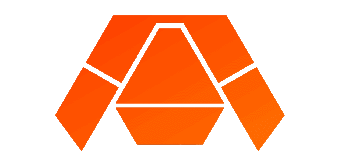Goliath Fall 2016
Preliminary Project Plan
Kristen Oduca (Project Manager)
Diana Nguyen (Missions, Systems, and Test Engineer)
Sou Thao (Electronics and Control Engineer)
Dylan Hong (Design and Manufacturing Engineer)
Table of Contents
Work Breakdown Structure (WBS)
By Kristen Oduca (Project Manager)
Figure 1 shows the work breakdown structure of the Goliath Fall 2016 Robot. The diagram splits the structure of the autonomous Goliath into three sections, missions, electronics, and manufacturing. It then splits the sections into components necessary to build the robot. These assignments were based on the system block diagram created by the Missions, Systems, and Test Engineer and the unique tasks created by the Electronics and Control Engineer and Design and Manufacturing Engineer that can be located in the Preliminary Design Document.
Project Schedule
By Kristen Oduca (Project Manager)
Top Level Schedule
Using Project Libre, the schedule is split into three main sections, systems, electronics, and manufacturing. The schedule was based on the the WBS and arranged in a manner that allows the group to completely each task in a timely fashion. There is some wiggle room for each assignment to account for any mishaps that may happen along the way.
As of now, the longest tasks assigned are building the custom shield and assembly of Goliath. The task depend on previous tasks that need to be completed first before those are finished. As mentioned before, each task has been assigned earlier than the due date in order to compensate for any issues.
System/Subsystem Level Task
Figure 2 shows the unique tasks that the Electronics and Control Engineer and Design and Manufacturing Engineer need to complete. It shows the date they will need to start working on it and the date it must be completed by. These tasks were based off the Preliminary Design Document.
Burn Down and Project Percent Completion
System Resource Reports
By Diana Nguyen (Missions, Systems, and Test Engineer)
 In the mass report showed in Figure 4 we look at the at the possible components that will be part of the Goliath. We looked at some of the previous part to get a better estimate of how some of the components may weight. For example, the 3Dot does not have a spec sheet that has its weight. Some of the items we have and were measured by our Design and Manufacturing engineer.
In the mass report showed in Figure 4 we look at the at the possible components that will be part of the Goliath. We looked at some of the previous part to get a better estimate of how some of the components may weight. For example, the 3Dot does not have a spec sheet that has its weight. Some of the items we have and were measured by our Design and Manufacturing engineer.
 In the power report showed in Figure 5 we look at the the different aspects of each electrical component and how it may act when connected together. We do not have any of our components yet so all the information are estimations.
In the power report showed in Figure 5 we look at the the different aspects of each electrical component and how it may act when connected together. We do not have any of our components yet so all the information are estimations.
 In the cost report showed in Figure 6 we look at all the parts we believe that will be part of the Goliath and how much it would cost. A miscellaneous category was added cover the cost of screws, shipping and any other items that may be added later on.
In the cost report showed in Figure 6 we look at all the parts we believe that will be part of the Goliath and how much it would cost. A miscellaneous category was added cover the cost of screws, shipping and any other items that may be added later on.
Source Material
- Sensors
- https://www.intorobotics.com/types-sensors-target-detection-tracking/
- http://www.instructables.com/id/Motion-Following-Robot/
- http://www.instructables.com/id/How-to-make-an-object-following-robot-the-stalkerb/
- http://www.allaboutcircuits.com/projects/how-to-build-a-robot-follow-walls/
- http://www.instructables.com/id/Object-tracking-robot/
- http://startrobotics.blogspot.com/2013/11/object-tracking-robot.html
- Motor
- Phone



